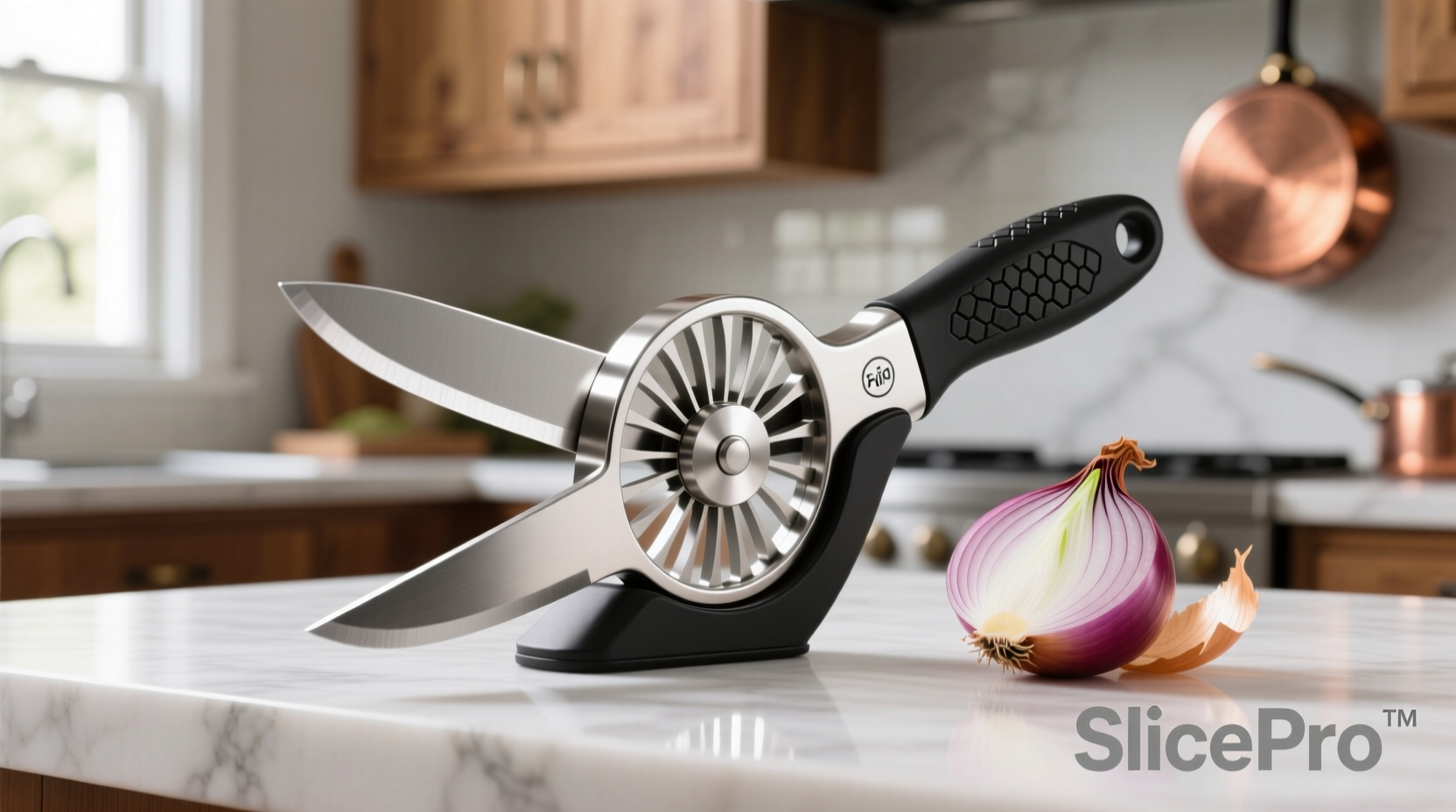The Science Behind Onion Tears (And How Slicers Help)
When you cut an onion, you rupture cells containing syn-propanethial-S-oxide, a volatile compound that converts to sulfuric acid when it contacts moisture in your eyes. This triggers the stinging sensation we all know. According to research published in the Journal of Food Science, mechanical slicers reduce this reaction by:
- Creating cleaner cuts that rupture fewer cells
- Containing onion pieces within protective chambers
- Allowing faster processing (less exposure time)
Onion Slicer Types: Finding Your Perfect Match
Not all onion slicers serve the same purpose. Your ideal model depends on your cooking habits, kitchen space, and specific needs. Here's how the main categories compare:
| Type | Best For | Prep Time Savings | Safety Rating | Cleaning Difficulty |
|---|---|---|---|---|
| Manual Press-Style | Occasional cooks, small kitchens | 40-50% | ★★★☆☆ | Easy |
| Rotary Blade Models | Daily cooking, consistent results | 60-70% | ★★★★☆ | Moderate |
| Electric Slicers | Large batches, commercial use | 75-85% | ★★★★★ | Complex |
| Multi-Functional Mandolines | Versatile prep, multiple vegetables | 50-60% | ★★★☆☆ | Moderate |
When an Onion Slicer Might Not Be Your Best Tool
While onion slicers excel at uniform cuts, they have specific limitations you should consider:
- Delicate preparations: For dishes requiring precise knife work like French onion soup, a chef's knife provides better control over layer separation
- Very small quantities: Processing a single shallot often takes longer in a slicer than with a knife
- Specialty cuts: Julienne or brunoise cuts typically require knife skills rather than mechanical slicing
The USDA's Food Safety and Inspection Service notes that improper handling of any kitchen tool can create safety hazards. Always use the food holder provided with your slicer and never attempt to force stubborn pieces through the mechanism.
Maximizing Your Onion Slicer's Performance
Professional chefs achieve consistently clean cuts through these techniques:
- Chill first: Refrigerate onions for 30 minutes before slicing—cold temperatures slow enzyme activity
- Proper positioning: Align the onion's root end with the slicer's center for balanced pressure
- Consistent pressure: Apply firm, even force rather than hammering motions
- Immediate cleaning: Rinse blades under running water before sulfur compounds harden

Beyond Onions: Unexpected Uses for Your Slicer
Many quality onion slicers handle other vegetables with excellent results:
- Tomatoes: Use the thinnest setting for perfect sandwich slices
- Potatoes: Create uniform slices for gratins or chips
- Carrots: Achieve consistent matchsticks for stir-fries
- Cucumbers: Produce paper-thin slices for salads or garnishes
Just remember to adjust settings based on vegetable density—softer produce requires gentler pressure to prevent crushing.
Maintenance Tips for Long-Lasting Performance
Extend your slicer's lifespan with these professional care techniques:
- Hand-wash all components immediately after use (dishwashers can dull blades)
- Use a soft brush to remove trapped onion fibers from blade crevices
- Dry thoroughly before storage to prevent moisture damage
- Apply food-grade mineral oil to metal parts quarterly
- Store disassembled in a dry location away from humidity











 浙公网安备
33010002000092号
浙公网安备
33010002000092号 浙B2-20120091-4
浙B2-20120091-4